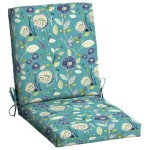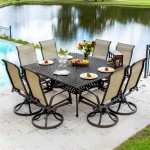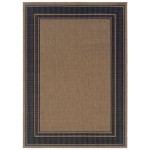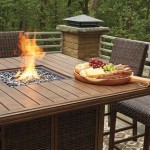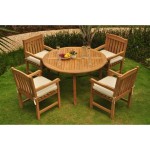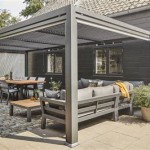Faux Marble Outdoor Dining Table: A Comprehensive Guide
Faux marble outdoor dining tables have gained considerable popularity in recent years, providing an aesthetically appealing and durable alternative to traditional materials like wood, metal, or natural marble. This article delves into the specifics of faux marble outdoor dining tables, exploring their composition, benefits, maintenance requirements, and considerations for purchasing.
The term "faux marble" refers to a material that mimics the appearance of natural marble but is constructed from different substances, often engineered composites. These materials are designed to replicate the veining, coloration, and overall elegance associated with genuine marble, while offering enhanced durability and often, a lower price point. Understanding the composition and properties of these tables is crucial for making an informed purchasing decision.
Understanding the Composition of Faux Marble
Faux marble outdoor dining tables are typically constructed using a variety of materials, each contributing to the table's overall aesthetic and functionality. The most common materials include:
Resin Composites: Many faux marble surfaces utilize resin composites, such as polyester resin or acrylic resin, blended with stone particles, pigments, and fillers. The resin acts as a binder, holding the other components together and creating a solid, homogenous material. The stone particles, often marble dust or crushed quartz, contribute to the realistic look and feel of marble. Pigments are added to match the desired color and veining patterns of natural marble. These composites are frequently molded into specific shapes and sizes, allowing for a wide range of table designs.
Concrete Overlays: Another technique involves applying a faux marble finish over a concrete base. This approach typically uses a specialized concrete mix that is pigmented and treated to mimic the appearance of marble. The concrete base provides substantial structural support, while the faux marble overlay offers the desired aesthetic. Sealing the concrete is crucial to protect it from the elements and prevent staining or water damage.
Ceramic or Porcelain Tiles: In some cases, faux marble outdoor dining tables may utilize large-format ceramic or porcelain tiles. These tiles are printed with high-resolution images of marble patterns and are then adhered to a stable substrate, such as a metal or wood frame. Ceramic and porcelain are both highly durable and resistant to scratches, stains, and moisture, making them well-suited for outdoor use. The grout lines between the tiles must typically be sealed to prevent water penetration and maintain a clean appearance.
Acrylic Solid Surface: Acrylic solid surface materials, such as those used in countertops, can also be employed to create faux marble outdoor dining tables. These materials are non-porous, resistant to staining and bacteria, and can be seamlessly joined to create large, continuous surfaces. Acrylic solid surfaces are typically thermoformed into the desired shape and can be precisely colored and patterned to resemble natural marble. They offer good resistance to weathering and UV exposure, although prolonged exposure to direct sunlight may cause some fading over time.
The choice of material significantly impacts the table's weight, durability, resistance to weathering, and overall cost. Understanding the properties of each material is essential when evaluating different faux marble outdoor dining table options.
Benefits of Choosing a Faux Marble Outdoor Dining Table
Faux marble outdoor dining tables offer several advantages over traditional materials, making them a popular choice for homeowners and designers alike. These benefits include:
Durability and Weather Resistance: Unlike natural marble, which is porous and susceptible to staining and etching, faux marble materials are often engineered to be highly durable and resistant to weathering. Resin composites, concrete overlays with proper sealing, and ceramic/porcelain tiles are all designed to withstand exposure to rain, sunlight, and temperature fluctuations. They are less prone to cracking, chipping, or fading compared to natural stone, making them suitable for year-round outdoor use.
Lower Maintenance Requirements: Faux marble surfaces generally require less maintenance than natural marble. They are typically easier to clean and less prone to staining. Regular cleaning with mild soap and water is usually sufficient to maintain their appearance. Sealing might be required periodically, depending on the material, to further enhance stain resistance and prevent water damage. This reduced maintenance makes them a practical choice for outdoor settings where spills and exposure to the elements are common.
Cost-Effectiveness: Faux marble dining tables are typically more affordable than tables made from genuine marble. Natural marble is a costly material to quarry, fabricate, and transport. Faux marble, on the other hand, utilizes more readily available and less expensive materials, resulting in a lower overall cost. This allows homeowners to achieve the elegant look of marble without the significant financial investment.
Design Versatility: Faux marble materials can be molded and shaped into a wide variety of designs, offering greater design flexibility compared to natural marble. They can be produced in various colors, patterns, and sizes, allowing for customization to match specific design preferences and outdoor spaces. The ability to replicate different marble varieties and veining patterns provides ample opportunities for creating unique and stylish outdoor dining areas. It is also easier to incorporate faux marble into intricate designs, where natural marble might be difficult or impractical to use.
Weight Considerations: Depending on the specific material used, faux marble dining tables can sometimes be lighter than solid marble tables. This can make them easier to move and reposition within an outdoor space. A lighter table can be beneficial for those who frequently rearrange their outdoor furniture or need to move the table for storage during the off-season. However, it's also important to consider the table's stability, especially in windy conditions.
Key Considerations When Purchasing a Faux Marble Outdoor Dining Table
When selecting a faux marble outdoor dining table, several factors should be carefully considered to ensure that the table meets your specific needs and preferences. These considerations include:
Material Quality and Durability: Inspect the material composition and construction of the table closely. Look for high-quality resin composites, properly sealed concrete overlays, or durable ceramic/porcelain tiles. Ask about the UV resistance of the material to ensure it can withstand prolonged exposure to sunlight without fading or discoloration. Check for any signs of weakness or instability in the table's construction.
Size and Shape: Choose a table size and shape that is appropriate for your outdoor space and the number of people you typically entertain. Consider the available seating and the overall layout of your patio or deck. Common shapes include rectangular, round, oval, and square. Rectangular tables are often well-suited for larger gatherings, while round tables promote conversation and can fit comfortably in smaller spaces. The table height should also be considered to ensure comfortable dining.
Base Material and Stability: The base of the table is crucial for stability and support. Common base materials include metal, wood, and concrete. Metal bases are often powder-coated to resist rust and corrosion. Wood bases should be treated to withstand outdoor conditions. Ensure that the base is sturdy and well-connected to the tabletop. A wide, stable base will help prevent the table from tipping over, especially in windy conditions.
Style and Aesthetics: Select a table that complements your existing outdoor furniture and décor. Consider the color, pattern, and overall style of the faux marble surface. Look for a design that reflects your personal taste and enhances the aesthetic appeal of your outdoor space. Pay attention to the details, such as the table's edge profile and the design of the base.
Maintenance Requirements: Understand the maintenance requirements of the specific material used in the table's construction. Ask about the recommended cleaning methods, sealing requirements, and any special precautions to take to protect the surface. Choose a table that is easy to clean and maintain to avoid unnecessary hassle.
Warranty and Customer Reviews: Check for a warranty that covers defects in materials and workmanship. Read customer reviews to get an idea of the table's durability, performance, and overall satisfaction. Pay attention to any recurring issues or complaints reported by other customers. A reputable manufacturer will typically offer a reasonable warranty and provide helpful customer support.
By carefully considering these factors, individuals can select a faux marble outdoor dining table that provides both aesthetic appeal and long-lasting durability, enhancing their outdoor dining experience for years to come.

7 Pcs 70 9 Faux Marble Outdoor Dining Table Set With Woven Rope Chairs In Gray For 6 Person Patio Yard Large Chair

7 Pieces Outdoor Dining Set With Faux Marble Top Aluminum Table And Rope Woven Chair

7 Piece Metal Outdoor Dining With Faux Marble Compact 55 Inch Kitchen Table Set For 6 In Black Frame And White H2ph012ot017 The Home

7 Pieces Outdoor Dining Set With Oval Faux Marble Top Table And Rope W

11 Pieces 94 5 Outdoor Faux Marble Top Dining Table Set With Rope Woven Armchairs Homary

Edgewater Outdoor Dining Table In Jade Faux Marble Arhaus

7 Pieces Outdoor Dining Set With Oval Faux Marble Top Table And Rope W Luxurinodecor

Tribesigns 63 Dining Table With Faux Marble Top For 4 6 Tribesignsb2b

7 Pieces Outdoor Dining Set With Oval Faux Marble Top Table And Rope W

Faux Marble Outdoor Patio Dining Tables Living Spaces


